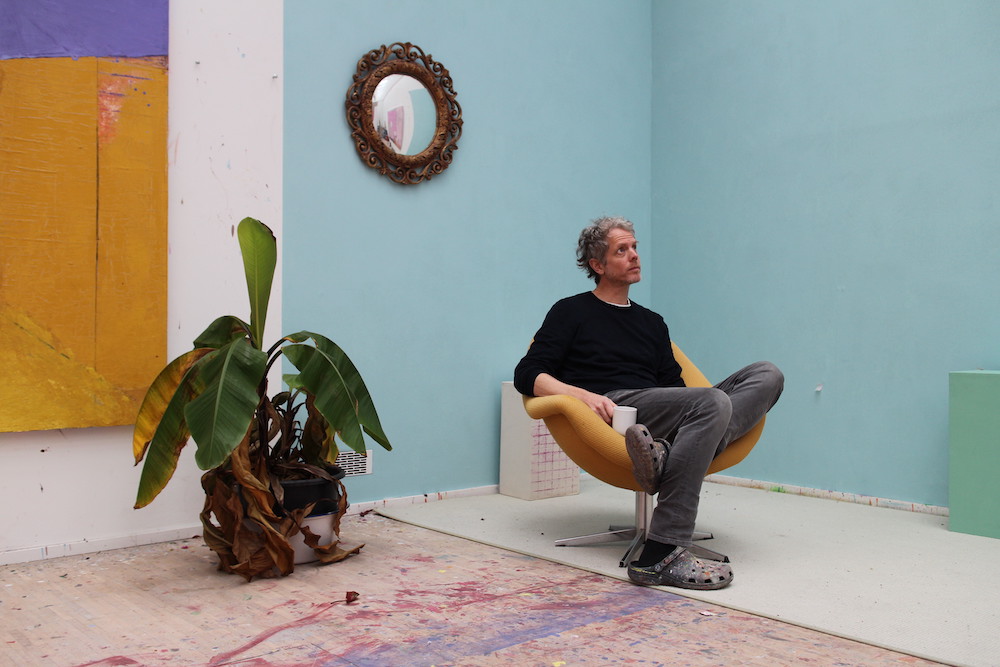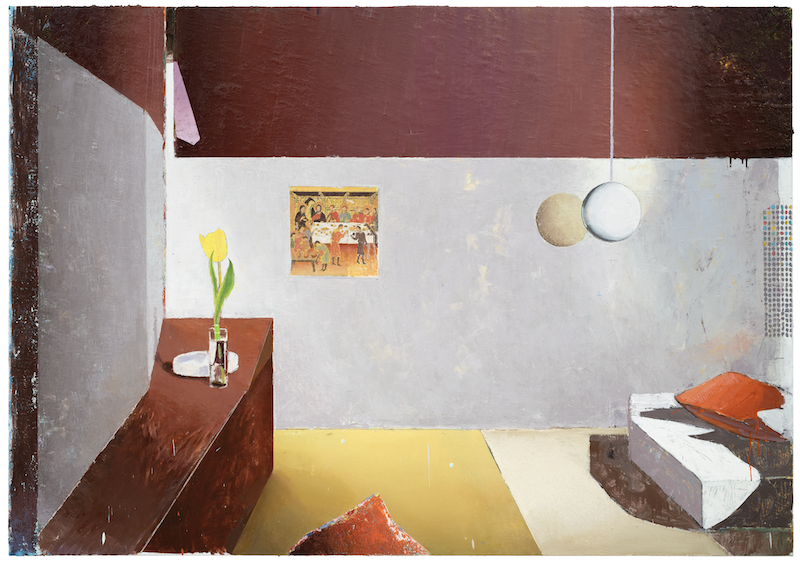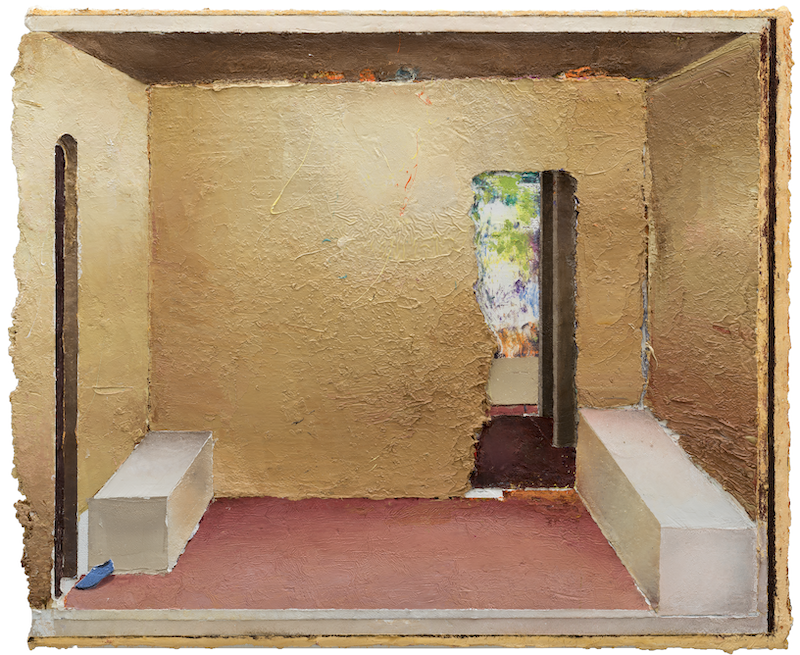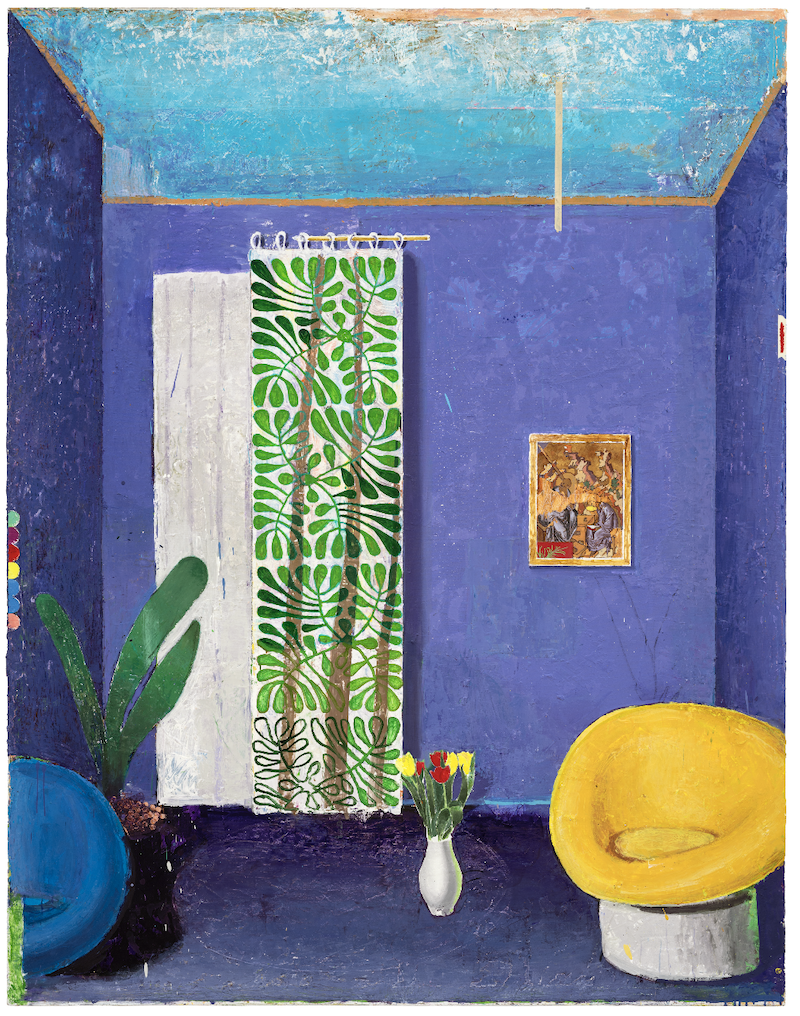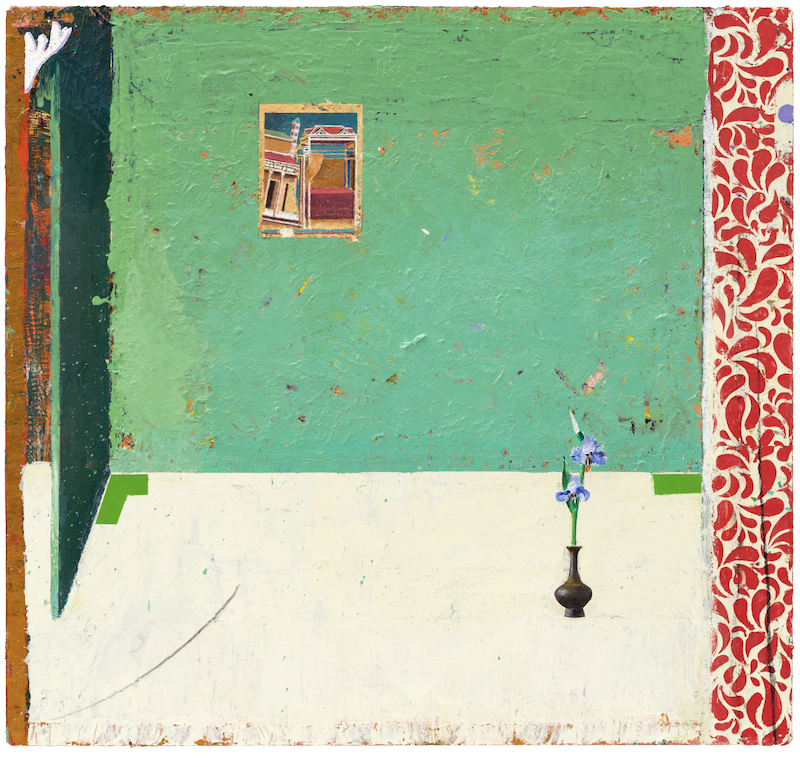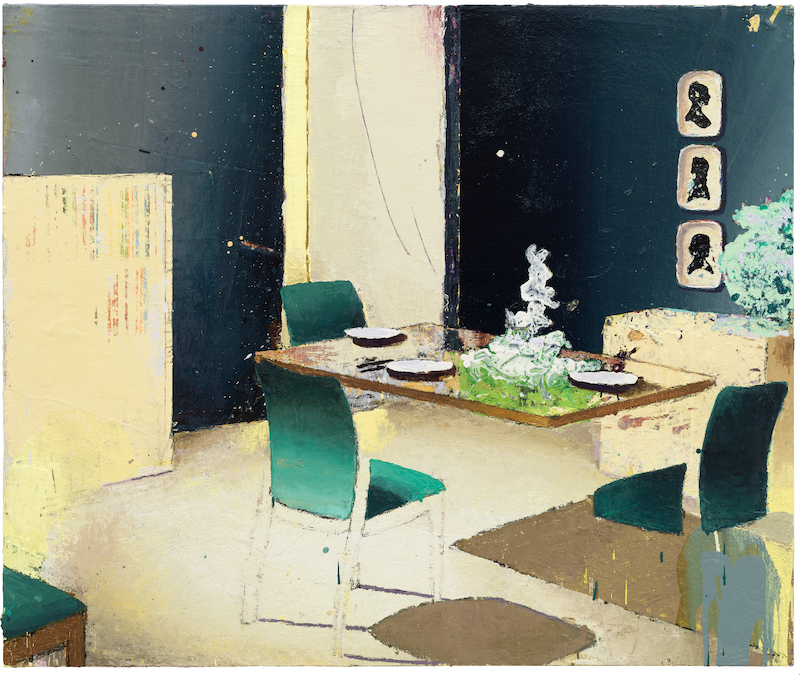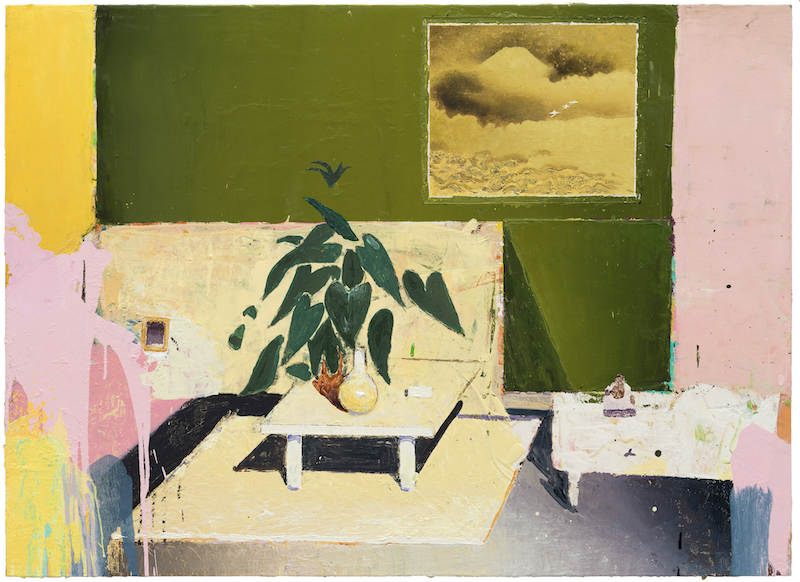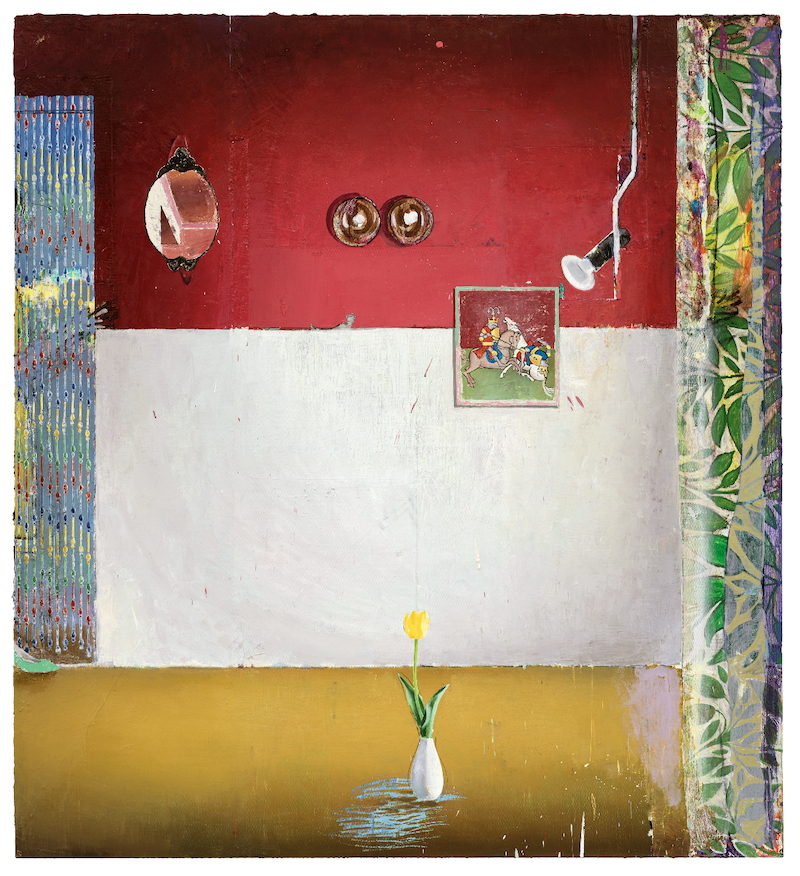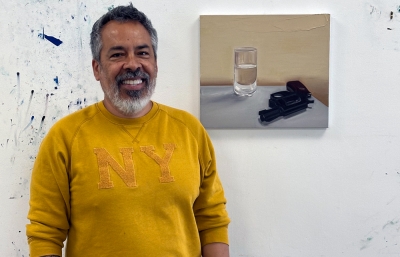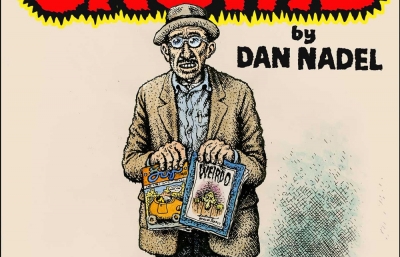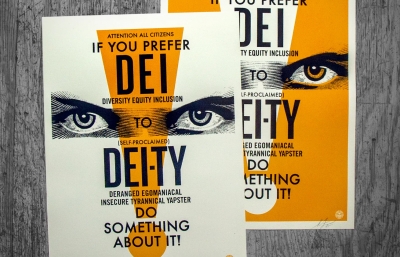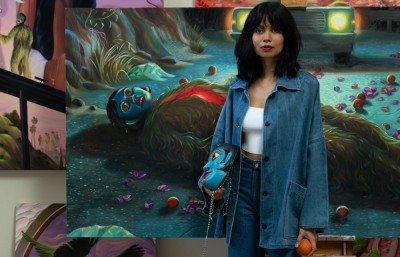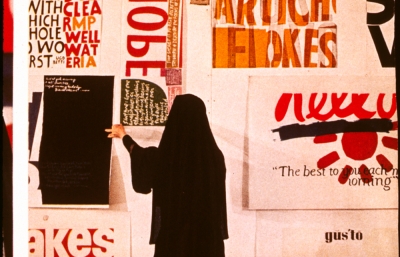Who doesn't love the classic story of an outsider, an unassuming competitor who wins the big game and reaches the summit? Not that all art is a competition, or that Matthias Weischer is an outsider, but I assume few people were betting on a young student painting living rooms at the start of the 21st century who goes on to become one of the most recognized names in the world of figurative painting. Or, that his very close group of friends from the academy would end up forming one of the most admired groups of artists at the turn of the century—the New Leipzig School.
Using a humble, universal setting, and an interior corner, Weischer explores light, form, color, and texture, driven by a borderline obsession with space. More precisely, he is obsessed with the magic of painting and the ability to utilize rudimentary tools within two dimensions while manipulating space into an illusion that appears wide, embracing the relationship between pictorial and technical aspects of the work. Just as his seemingly simple compositions captivate and enchant, it was equally pleasurable to listen to the master painter/builder openly share stories, thoughts, beliefs, and aspirations at his home studio in Leipzig's iconic Spinnerei.
Sasha Bogojev: Let's begin with how and when you developed this interest in creating spaces on the canvas.
Matthias Weischer: I think it started nearly twenty years ago. I was first doing this living room thing, which was kind of inspired by the real existing ones I knew from my childhood, not really from the house where I grew up, but more from friends' houses. I traveled back there twenty years ago and made photos, so I think that was a kind of starting point.
It sounds like it was an emotional tug, a connection to childhood.
Yeah, I think it was very emotional. I did like to catch an atmosphere that was not very pleasant, a spooky one. It was a bit crazy, like traveling back to my youth. But yeah, this was a kind of starting point, and then somehow I haven’t lost interest in it in these last twenty years.
But the idea of capturing the spookiness, I have a feeling that completely evolved.
Yeah, that changed absolutely, and that's the point. I don't see these old works very often, but when I last saw them recently in the Drents Museum, there were some very old ones that I hadn’t seen for twenty years, so when I saw them again, it was really like having this kind of atmosphere and emotion back. That was interesting and quite enjoyable also because it was as if I was traveling back in time.
So that means you achieved what you were trying to capture at the time!
Yeah, but it's not only about going back into spooky times, it's also about good memories, so creating these things was really enjoyable. I had really good times in the studio back then, and very intense times. I don't know about other artists, but I do think, as an artist, you don't have so many moments of real excitement in the studio; still, these times really felt that way, an early time when you might develop something which you feel might stay with you for the rest of your life. This can be quite thrilling. And now, of course, everybody is kind of used to my interiors and it's not very new...
Do you feel some of that excitement with the iPad drawings?
Yes, it was a bit similar. I got really excited about them because I saw the possibilities I could achieve with that method.
How did that transfer look for you? And what are the elements that excite you?
For me, it's the approach that is a different one than with painting. I can really sit in front of my object and in front of the motive, and I can really draw from life. I can also work in a very painterly manner and I can also put things together as I do on the canvas. But with the iPad, I can really easily do it without moving so much material. It's more playful, in a way, because you're not wasting material. In a way, it's very efficient.
I wonder if that would feel the same when you started painting.
No, but it's not because of laziness, not because I'm afraid of getting dirty hands or something. I still love going to the studio, and for me, painting on canvas is the ultimate thing. But this is an additional tool that I really enjoy. What's interesting for me is that I can't rely on the real materials and I can't rely on all the textures which are sometimes very tasty and yummy. So I benefit in a different way from the iPad. And I can feel that what I do on the iPad is always in relation to the painting. Because the ultimate thing is the painting.
What aspects of traditional painting are most alluring for you?
There is something that makes you appreciate the real deal after you paint for a long time only on the iPad. When you go back to the studio and you see what is happening there it's like there are more aspects. It's much richer in a way, so more of an adventure. You cannot predict so much of what is happening on the canvas, so you enjoy more surprises, I think. And of course, you are standing in line with a long tradition, so you want to do something on a canvas, something people have done since the beginning of history. It's interesting and gratifying that oil painting is alive and well and that people still find enjoyment in it.
I think people will always do it because this is made by hand and you are leaving marks on the canvas. It's really magic done with a very primitive little stick with some hairs on top. And as you can also see in my twin paintings, you can control it only to a certain degree. It's always in a very unstable situation in which, nonetheless, everything is possible.
Do you see your work fitting in the traditional, historic art canon and how do you feel in comparison? What types of work do you look at for inspiration?
I think I'm quite consciously used to standing in line with artists who worked before. But yeah, of course, I'm looking at very early Renaissance and Gothic paintings, which possess a very clear architecture, the type of work where the central perspective might seem askew, in a way, but has perfect composition. Also, color field painting is something I look a lot at, as well as Chinese and Japanese paintings, along with woodcut prints.
Actually, very often I quote things in the paintings, which really interest me. In the painting, I'm really pointing to what I'm kind of referring to, emotionally or whatever. Like in a particular painting, I have this kind of quote. It's not a program for the whole painting but is a playful way of showing what I'm seeing at the moment. Sometimes I'm really tempted to just paint it because I love it so much, I just want to have it in the painting.
What is it that fascinates you about such perspectives and layouts?
I think it's just how they work in a totally different way than paintings which are totally correct with this sense of central perspective. They have a different space. Of course, we are all used to having this through photography and so on, to have this so-called correct way of looking. But I think that even on a small scale, the paintings and each area are getting much wider, and you as a viewer feel freer to move in, to move around. You're not fixed only to one viewpoint, it's more like it's embracing you.
I'm just trying out these things because I want to know what is working best for me as a painter. I think I'm coming back to these perspectives because I feel this is optimal for the painting. You get a much bigger space and you can add on. So between left and right, or between the objects, you have a much bigger space than if you really put them in order. This is something I will try out and do again. I’m trying out different concepts all the time.
It appears that some of these new works don’t possess the thickness of some of your earlier works, including some recent ones I've seen.
Yeah, this is what I constantly think, that I want to change something. Of course, what I always can do is keep adding more and more paint. But with this, I try to be more conscious of what I want to do before I put on more paint because normally I really like starting from the background. I'm just making the space, like building walls, a floor, a ceiling, and then thinking, what can I put into the space? Then sometimes that will come in faster, like a lamp. But it is a very incremental process, just putting things on top.
It sounds like a proper building...
Yeah, like a builder. First, you build the house, then you furnish it, and then you paint the walls. I really like working from the back to the foreground. What I'm trying now is to think about what is coming into the space before I make a solid wall in the background. I tried this several times, and I'm always trying to be more aware of what is coming. Normally, I really don't think too much ahead, and it's not because of practical things, but because I'm really interested to see if I can work with less paint. If I can find something that is more open, more colorful, and more bright in a way, that might affect my motivation. But this has been my tendency over the last twenty years, getting more and more colorful, more light, in a way.
And what's your relationship with the figures in your works?
With the last paintings, I always thought that the figure might be coming. I was working on them for a long time and I was waiting for the moment when the figure would come into the painting. And finally, they didn't come. I think when I look at them, there's always a kind of place, which was meant to be the place for the figure that didn't arrive at the end. Maybe they're still coming, maybe not...
It's like waiting for Godot…
Yeah, it's strange. That's because there is a very strong desire to have a figure in the painting. But I can't really predict what is happening or when the figure will be in it. Obviously, the space will become less important, but now, for me, space is my main interest. And when the figure is there the static changes.
@MatthiasWeischer // This interview originally was published in our Fall 2022 Quarterly

